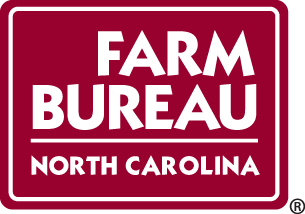Get Your Goat
July/August 2008 • Category: Features • Print This Page
Print This Page
When Farm Bureau member Ronald Hayes needed acres of woods cleared, he hired some goats. “They’re great brush clearers,” the Columbus County farmer says.
What started out as a convenient maintenance project for Hayes turned out to be a profitable investment. Goats are quickly becoming a niche product in the agricultural marketplace.
“They’re the fastest-growing livestock crop in the state, so there’s no trouble with market values,” Hayes says.
There are more than 210 different breeds of goat. They are used for milk, dairy products, meat and wool.
Milk and cheese from dairy goats have become more common in grocery stores than in past years. In fact, worldwide, more people consume milk and other dairy products from goats than from any other animal. Annually, goats produce more than 4.5 million tons of milk worldwide, according to research conducted by the University of Delaware and Pennsylvania State University Extension.
Raising goats has become more popular as people realize how low-maintenance the animals can be. “There’s trimming their feet, shots, worming, feeding and kidding (birthing babies),” Hayes says. “It’s the same things you do with cows, but they’re small compared to cows, so they’re easier to handle.”
The size of goats can vary drastically depending on the breed – ranging from about 20 pounds for a small male or female pygmy goat to 300 to 350 pounds for an adult meat goat.
The idea of the junkyard billy goat that eats anything it can find, including clothes off the clothesline and tin cans, is a common myth. In reality, goats can be picky eaters. They are known to refuse water if it’s dirty and avoid food that has been soiled or contaminated.
“They’re finicky eaters,” Hayes says. “You can take good grain and blow your breath on it, and they won’t eat it because of the scent.”
Despite sometimes being picky eaters, goats are notorious live “weed-eaters.” They can easily subsist in parched areas where sheep or cows may struggle. As scavengers of the ruminant world, they can survive on bushes, trees and desert scrub. For that reason, goats are often used by ranchers to ease brush encroachment on open ranges.
Originally purchased for clearing the undergrowth in Hayes’ wooded property, the goats became the start of a new business venture. “We just started with a few and grew from there,” Hayes says.
“They’re just a lot of fun.”
You’ve got to be
kidding me!
Goat facts you’ll never believe
• Before coins were used for money, goats were traded for silver because they were
so valuable.
• The pharaoh Cephranes thought so much of his goats that he had 2,234 buried
with him.
• Mahatma Gandhi consumed goat milk every day for more than 30 years.
• Carl Sandburg loved his goats so much that when Life magazine (1938 issue) asked him to pose for a picture with his favorite dog, he insisted the picture be taken with his goats.
• Goats and octopi have rectangular pupils.
• The early explorers used goat skins for water and wine bottles when they traveled.
• During Biblical times, goat skins were used as parchment for writing.
• Coffee was first discovered when goat herders noticed the animals acting very energetic after nibbling on coffee beans.
• Abraham Lincoln’s sons had two goats that lived in the White House with them.
Source: Florida A&M University Extension




